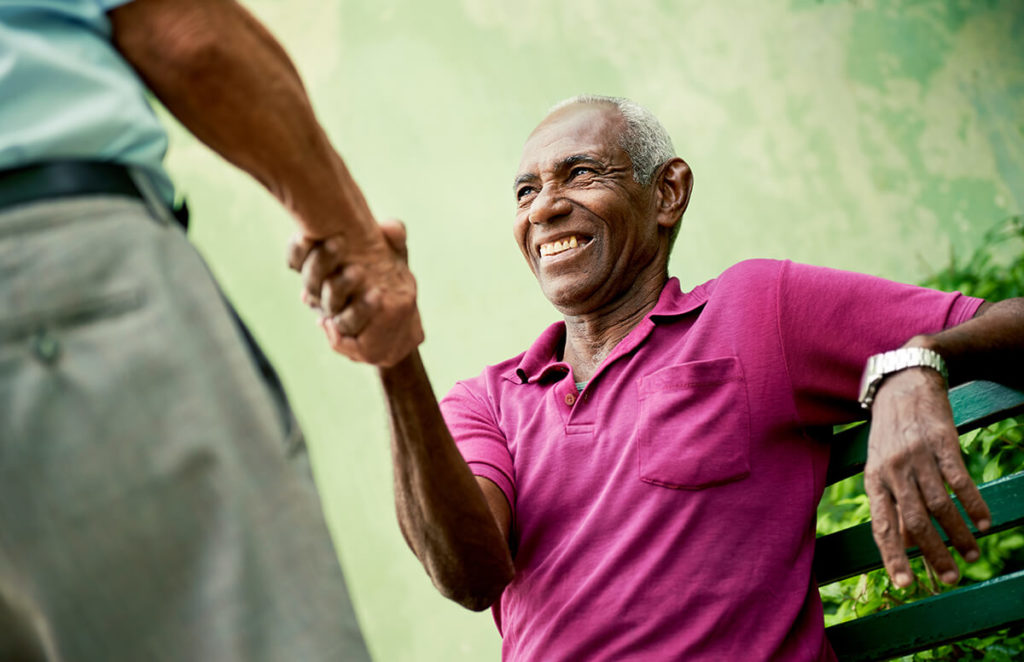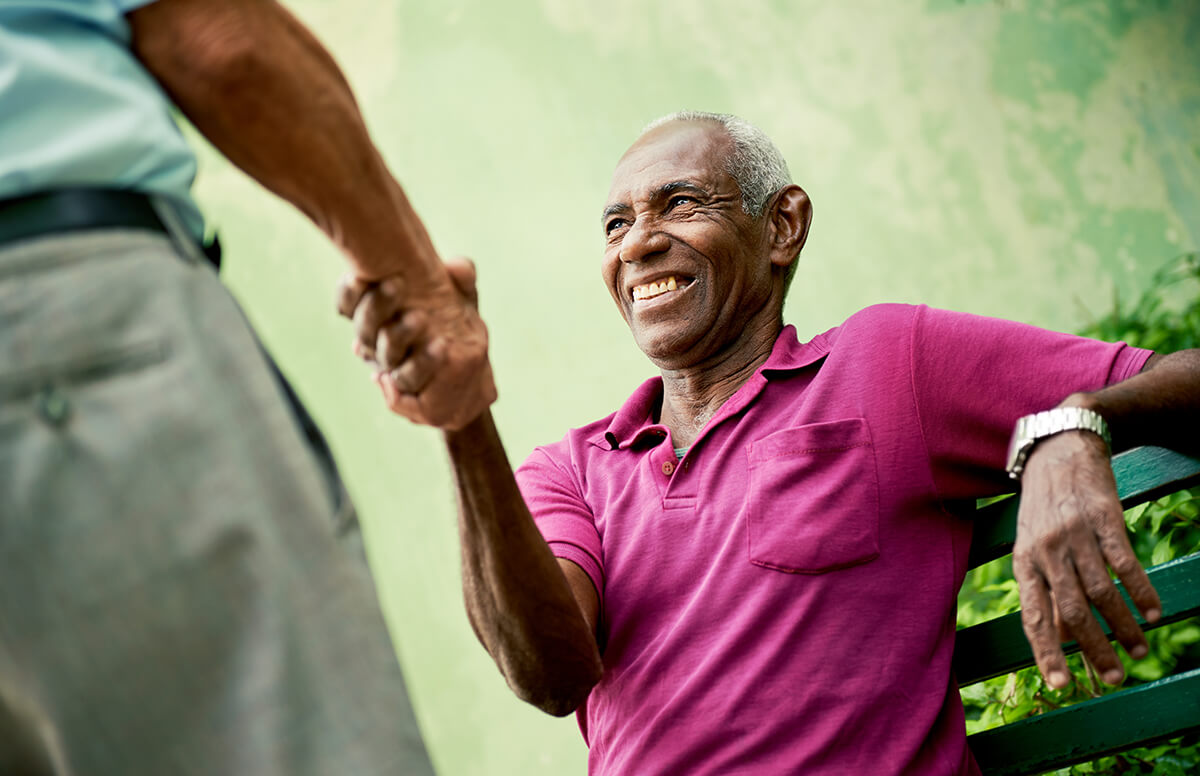by Grace Birnstengel. This article originally appeared on Next Avenue.

HIV/AIDS used to be considered a disease of the young. In the early 1980s, when doctors first reported cases of HIV, nearly 70% of diagnoses were among people under 40.
Fast forward four decades later and more than 50% of Americans with HIV are now over 50. And by 2020 that number is expected to reach 65% to 70%. This is largely due to major medical improvements in the effectiveness of anti-retroviral therapy (ART) in suppressing the virus and transforming HIV from an often fatal disease into a chronic condition, like diabetes or hypertension.
But health care, services and supports for Americans with HIV/AIDS hasn’t adapted its approaches to match this demographic shift. Prevention, testing and care efforts are focused on younger people.
Dr. Mark Brennan-Ing, a research scientist focused on HIV and aging at Hunter College’s Brookdale Center for Healthy Aging in New York City says that a culture of ageism promotes the invisibility of older adults with HIV. On top of that, HIV stigma causes some to keep their status private, rendering this population even more invisible.
“A lot of older folks don’t feel like they have a place anymore,” says Brennan-Ing,
In conducting research on older adults with HIV/AIDS, Brennan-Ing recalls a striking sentiment from one man in a research group: “He got a referral to this program, and he went there and it was all these young kids. They looked at him and said, ‘Oh, we got a grandpa,’” said Brennan-Ing. “He never went back.”
Ageism is destructive to HIV prevention efforts as well, Brennan-Ing says, since doctors often neglect to think of their older patients as sexually active and therefore at risk for HIV. Risk does not diminish with age, yet doctors are less likely to test older people for the virus, resulting in more late diagnoses and dual diagnoses of HIV/AIDS — a more complicated and challenging condition to manage.
The Health Landscape for Older People With HIV
For people with HIV, status is only one part of their overall health. Older people with HIV are, of course, at risk for the common health problems that any older person might face, and research shows that this population is particularly susceptible to conditions we associate with aging like arthritis and cardiovascular disease.
“If people take their medications, they can keep their virus suppressed for decades and live almost as long, and now we are seeing expressions of chronic suppressed HIV,” says Dr. Amy Justice, a professor and researcher at Yale School of Medicine and a physician at VA Connecticut Healthcare System. “What this means is patients have an increased risk for cardiovascular disease, cancers, stroke, chronic inflammation — and we’re only learning what else might be entailed under that.”
Looking at mental health, older people with HIV/AIDS are frequently depressed, lonely and isolated. A 2018 study of people with HIV age 50 or older in San Francisco showed 62% of respondents reported experiencing depression. When measuring loneliness with a 10-question survey, 21% respondents scored as “lonely,” and another 22% as “very lonely.”
“HIV stigma and isolation are really strong predictors of depression and depressive symptoms,” says Brennan-Ing. “It has a really negative affect on mental health and well-being, which also affects physical health because depression is the single best predictor of not adhering to HIV medications.”
Dr. Eugenia Siegler practices as a consulting geriatrician within the HIV clinic at Weill Cornell in New York. Patients are referred to her when they want to see a doctor who specializes in the intersection of HIV and aging — a rare specialty.
“Patients sometimes describe that they worry their [health care] provider is only interested in the HIV and not in their other medical issues,” Siegler says. “Others are concerned that the provider doesn’t see that they’re aging and isn’t prepared to ask the questions.”
A Need for Aging Services at Younger Ages
Michelle Lopez of Brooklyn wasn’t expecting to feel as old as she does at 53. Diagnosed with HIV in her 20s, Lopez has experienced pain in her joints, incontinence and what she describes as “excessive menopause” for the past five years.
Lopez feels her doctor doesn’t know what to do about her concerning symptoms and that on the whole, doctors and HIV specialists weren’t prepared for people with HIV to age.
“Some of us are walking around feeling these symptoms, and because they’re not over 60, doctors convince them that it’s their HIV and they just have to get the HIV under control,” Lopez says. “I say [to my doctor], ‘It’s related to my aging!’ And they just brush you off like it’s nothing. Why do I have to wait until I fall down and one of my bones gets broken for you to say, ‘Oh, Michelle, I didn’t realize you were dealing with frailty.’”
Lopez says health care must develop a better standard for those who are aging with HIV.
Brennan-Ing and Siegler have combined forces to strategize a model of care for those aging with HIV after geriatric medicine. The model would have doctors approach older people with multiple chronic health conditions not by treating every symptom and condition, but by strategizing care that allows the person to have the best functioning possible — and functioning that aligns with their life and health goals.
“The problem is we have a shortage of geriatricians,” Brennan-Ing says. “If we want to adapt these models, there aren’t enough geriatric practitioners to go around.”
Beyond in-clinic care, older adults in their 50s and 60s with HIV often need services that other older adults get from senior centers, but many don’t qualify because services like meals, benefit assistance, recreational activities and more are only offered to people 65 and older.
“A lot of these folks aren’t able to work because of disability or they’ve been out of the workforce so long for HIV/AIDS treatment that it’s hard to get a job,” Brennan-Ing says.
Even if hubs of programs and resources for older adults do expand their offerings to people in their 50s and early 60s, is a 50-something with HIV going to feel comfortable among a place with mostly people in their 80s?
“How do you take a phenomenon like this and make them more flexible and able to meet the needs of multiple generations?” Siegler asks.
When and How Care Works Best
When health systems are more integrated, have better communication and use electronic health records, a patient’s multiple doctors and specialists can more easily treat and manage conditions and systems — seeing the person holistically and not siloing the care.
“HIV clinics have tried to be one-stop shops for people with HIV for a long time,” says Justice. “But there is a limit to that. As we go into aging, we can’t have one-stop shops for oncology and diabetes and hypertension.”
Jay Johnson, a 59-year-old living with HIV in Philadelphia, says he’s “very comfortable with [his] team of physicians” because they’re mostly all part of the University of Pennsylvania Health System.
“The team approach has made a big difference,” he says. “Back in ’91, if my primary care doctor needed to talk to my infectious disease doctor, it would take longer.”
Siegler is a pioneer in the world of care for those aging with HIV as a geriatrician who works once a week consulting older patients with HIV. Acknowledging that HIV services and aging services are quite separated, she familiarizes HIV social workers with aging services, so social workers can connect patients to them appropriately.
Siegler’s model of consulting is just one model of care for this population. Another one of her ideas is adapting Medicare and Medicaid’s PACE program specifically for older people with HIV. PACE (Programs of All-Inclusive Care for the Elderly) allows people to receive health care services in community instead of in nursing homes or other care facilities.
“A major focus of [PACE] is a space for socialization connected with the clinical space,” she says. “There’s a recognition that socialization and health care are intertwined.”
In her role as a consulting geriatrician, Siegler helps address how to make a feasible model of care when patients lack access to a geriatrician. Ultimately, Siegler says, clinics must decide what will work best. She worries how the care will get done, considering the geriatrician shortage and infectious disease specialists choosing hospital medicine over in-clinic care.
“Sometimes it’s taking a geriatrician into the clinic, and sometimes it’s outsourcing. This has to do with relationships, with resources available and what patients want,” Siegler says.
Grace Birnstengel is a writer and editor for Next Avenue, currently leading an editorial initiative on age-friendly health care — what it means and how people can identify and access care that meets their unique needs. Her other areas of focus include LGBTQ issues, mental health, the arts and ageism. Grace holds a bachelor of arts in journalism and gender, women and sexuality studies from the University of Minnesota–Twin Cities. You can find her Next Avenue work here.
The opinions expressed in this article are those of the author and do not necessarily reflect those of the Diverse Elders Coalition.

